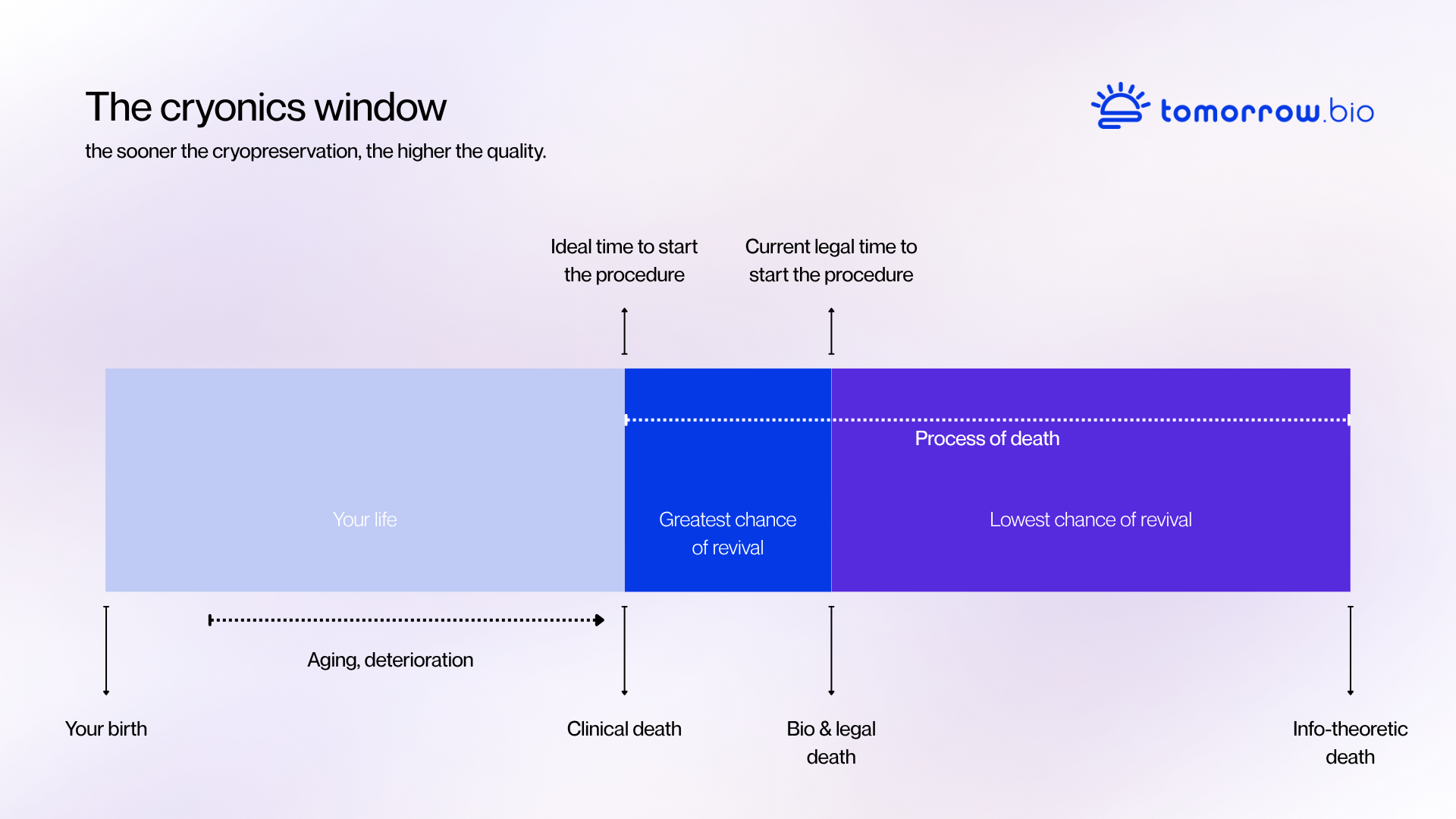Human cryopreservation, often referred to as cryonics or, more precisely, biostasis, is an advanced medical procedure that seeks to pause the dying process using cryogenic temperatures. It is performed on individuals after they have been pronounced legally dead, with the goal of preserving them in a state of biological stasis until future medical technology may be capable of treating their cause of death, repairing accumulated damage, and restoring them to full health. This practice is not a guarantee of future life but rather an ambitious medical intervention, a bridge to a potential future where today's untreatable conditions may become curable.
What is biostasis?
Biostasis is the state in which a living system is brought to a complete biological standstill without losing its structural integrity. It is the controlled suspension of life processes that allows cells and tissues to remain stable for long periods of time. In the context of cryopreservation, biostasis refers to a medical procedure that places the human body or brain into a non-degrading condition immediately after legal death. The goal is to maintain the biological and informational structure of the body until future medicine is able to repair the cause of death and restore function.
The idea of pausing life is not purely theoretical. In nature, organisms such as tardigrades, certain frogs, and arctic fish can survive extreme cold or dehydration by reducing or halting their metabolism. This natural ability to enter dormant states shows that life can persist in suspension if damage from ice or lack of oxygen is prevented. Cryonics builds on the same biological principle but applies it through medical science and technology.
During cryopreservation, the body undergoes a process called vitrification. Instead of freezing, the water within cells is replaced with cryoprotective agents that prevent the formation of ice crystals. Once cooled to around -196 degrees celsius in liquid nitrogen, chemical activity and biological decay effectively stop. The body enters a stable, glass-like state where its physical structure, including the delicate neural networks of the brain, is preserved indefinitely.
Biostasis challenges the conventional understanding of death as a single irreversible moment. It views death as a gradual process that can be interrupted before permanent loss occurs. By maintaining the body and brain in a stable, preserved state, biostasis gives future medicine the opportunity to continue where today’s treatments end. It represents both a scientific technique and a statement of belief in the potential of progress to extend and protect human life.
What is cryonics?
Cryonics is the practice of preserving people at extremely low temperatures immediately after legal death, with the intent of restoring them to life and health in the future. It combines advanced emergency medicine, perfusion science, and cryogenic storage technology to prevent biological decay until medical progress can potentially reverse today’s fatal conditions.
Cryonics is based on the understanding that death is a process rather than a single event. As long as the brain’s physical and informational structure remains intact, the person’s identity and memories may still be recoverable. By intervening quickly after legal death and placing the patient into biostasis, cryonics preserves this structure and keeps open the possibility that future science could one day repair and revive them.
In this sense, cryonics is not about freezing the dead but about preserving people after legal death in a stable state, giving future medicine the opportunity to restore life and health when technology allows.
How biostasis differs from cryonics shortly
- Biostasis describes the condition in which biological processes are placed into a state of suspended activity. It is the ability of an organism or biological system to tolerate extreme changes in the environment such as freezing, drying, or lack of oxygen by halting active metabolism and remaining structurally intact. Certain frogs, tardigrades, and other extremophiles naturally enter biostasis in harsh conditions.
- Cryonics refers specifically to the human-oriented procedure of placing a legally deceased individual into ultra-low-temperature storage, typically around -196 degrees celsius, with the goal of preserving bodily and neurological structure until future technology may allow revival.
Cryonics wouldn’t be possible unless there was a way to put people into biostasis at cryogenic temperatures.






